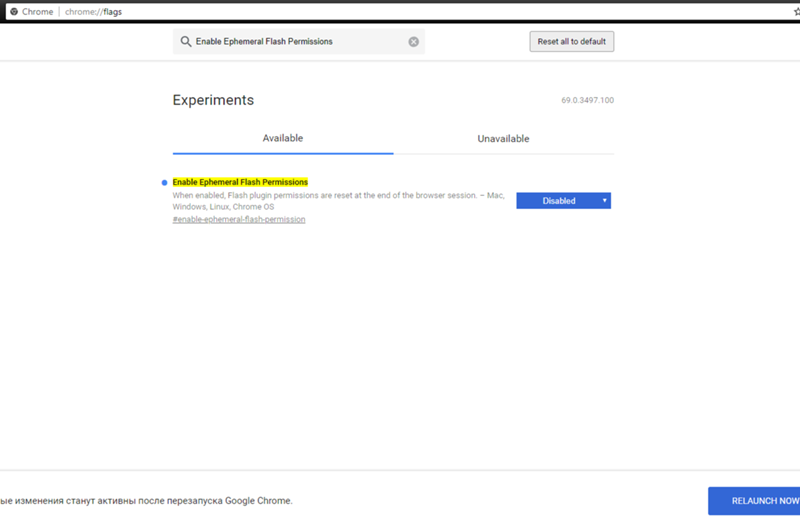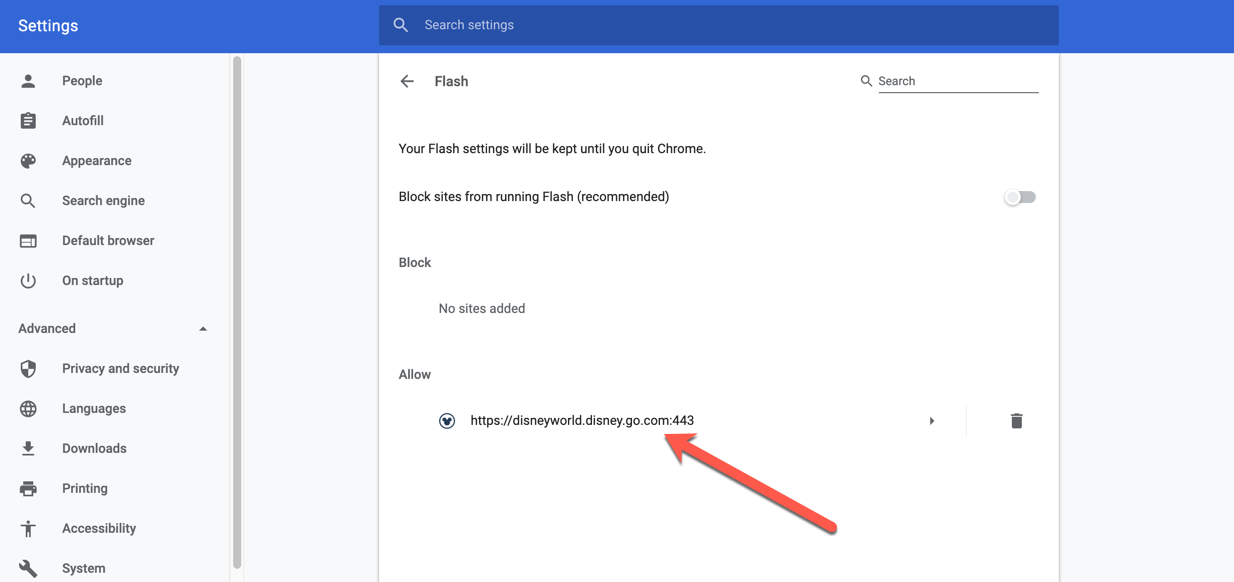

Manage Click-to-Play Permissions When you visit a website that uses Flash content, you’ll now see a grayed out, empty plugin icon where the Flash content should be. Whatever option you choose for an individual website will override the main option you choose here. However, you can still click the website’s permissions menu-which we outline below-to give a website permission to run Flash. This would block every website from running Flash, and Chrome won’t even prompt you to enable Flash when you visit a web page that tries to use it. You could also choose the “Block sites from running Flash” option. Select “Ask first before allowing sites to run Flash (recommended)” and Chrome will require your express permission before a site can run Flash plugin content. Scroll down until you can see the privacy section, then click on the Content settings button. Then you will need to click on the advanced settings link. Unlike the other web browsers, Adobe Flash Player is integrated into Google Chrome and enabled by default.Įnabling Click To Play Plugins in Chrome Click on the settings wrench and select the settings menu item. Adobe Flash Player – one of the most popular plug-ins: it allows you to view different videos online and listen to the music. If you’re using a Mac, it should be in the Applications folder. If you’re using Windows, you’ll usually find it in the Start menu. In the URL bar of Google Chrome, type the following address: chrome://components/ and hit return.
#MAC ADOBE FLASH SETTING CHROME HOW TO#
How to Update Adobe Flash Player Plugin in Google Chrome This updates the Adobe Flash Player plugin in the Chrome web browser, this is demonstrated in Mac OS but it works the same in Windows too.
#MAC ADOBE FLASH SETTING CHROME FOR MAC#
(No, there’s no way to have Chrome automatically play Flash anymore.How To Enable Flash In Chrome For Mac 4,1/5 9937 reviews Rather than Chrome automatically blocking Flash on all websites, you can set Chrome to ask before displaying Flash content.

Google seriously wants Chrome users to stop using Flash, so it’s making the Flash process annoying on purpose. If you use Flash frequently on a particular website, you’ll have to do this repeatedly.

Here’s the bad news: whenever you restart your browser, Chrome erases this list. Alternatively, you can head to chrome://settings/content/flash to view it. Whenever you allow Flash for a website, it’s added to the allow list-click the blocked plugin icon and click “Manage” to see it. To run all Flash objects on the page-including any hidden Flash objects running in the background-click the blocked plugin icon at the right side of the Omnibox and click “Run Flash this time.” To run an individual Flash object, click its Play button. To enable Flash for the site, click the lock icon at the left side of the Omnibox (address bar), click the “Flash” box, and then click “Allow.”Ĭhrome prompts you to reload the page-click “Reload.”Įven after you reload the page, any Flash content won’t be loaded-you have to click it to load it. When you visit a website that uses Flash, you see a “Plugin blocked” message at the right side of Chrome’s Omnibox or address bar. Chrome’s increasingly aggressive moves are supposed to encourage websites to move away from Flash while they still have plenty of time to do so. If you use Flash, you still have nearly one and a half years until it’s gone. Mozilla is even more aggressive-it will remove Flash support entirely in early 2020. Adobe will also end support for Flash at the end of 2020. Instead, Chrome blocks Flash by default with the message “Flash was blocked on this page.” If you re-enable Flash in Chrome, you see a message that says, “Flash Player will no longer be supported after December 2020,” with a button to turn off Flash.Īs Google explains, when the ball drops on New Year’s Eve, 2020, the countdown will also be counting down to the end of Flash. RELATED: How to Use Adobe Flash in 2021 and Beyondįlash isn’t completely gone-yet. Do you still need Flash content? Here are some tips for how you can still run Flash, in 2021 and into the future. Update: As of January 2021, Flash is no longer officially supported.


 0 kommentar(er)
0 kommentar(er)
